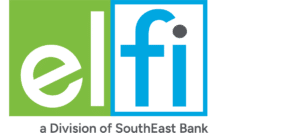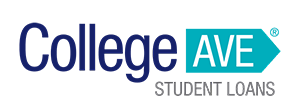Interest-free student loans.
You may have heard of them.
You may have thought they were an urban myth.
But guess what? They do exist!
Funding a college education can feel like a full-time job. From filling out FAFSAs and applying for grants to interviewing with scholarship committees, there’s a lot that goes into securing enough money to pay for tuition, fees, books, and living expenses.
But for those that are resourceful, there may be interest-free student loans available to help pay for college.
What Is an Interest-Free Loan?
Student loan interest rates are going up, and that means college is going to become more expensive for borrowers.
Once you max out your savings, scholarships, grants, and other merit-based funds, you may need to access student loans to bridge any gaps. Federal or private student loans are possibilities, but what about interest-free student loans?
Sometimes referred to as ‘no interest loans’ or ‘scholarship loans’, these loans can help pay for college, and they never accrue interest. Let’s take a look in more detail.
Overview of Interest-Free Student Loans
They may be elusive, but interest-free student loans are out there – they just might take some detective work to find. Each will have different requirements, and many are specific to a state, city, or location. Because they are usually offered as rewards for academic achievement to those with a demonstrated financial need, they typically aren’t offered to first year undergraduate students. Still, it never hurts to look – especially when there are serious savings involved.
Once you find organizations and state agencies that offer interest-free student loans, you’ll want to research the requirements. Don’t hesitate to reach out to the organization directly with questions. After researching, if it sounds like you qualify, then it’s time apply. Be sure to have your FAFSA completed – most organizations will require it.
While full (interest free!) repayment is usually required, some organizations that offer interest-free student loans also offer alternative ways to repay the loan. Some repayment plans may require public or community service, rather than just repaying the borrowed funds. As with any student loan, you’ll want to make sure you understand all the repayment details before signing on the dotted line.
Interest-Free vs. Subsidized
Interest-free student loans are not the same as a federal Subsidized Loan, one of the types of Direct Loans available to undergraduate students. Unlike no interest loans, these loans have the interest paid by the government while the student is in school and during the six-month grace period following graduation. Following the deferment period, you begin paying the principal and interest together.
The 4 Best Companies for Private Student Loans
Our Top-Rated Picks for 2023 Offer Low Rates and No Fees
Option to skip a payment once a year

In-school deferment available if you return for another degree

Optional $25 payment plan during school to reduce interest after graduation

1% Cash Back Graduation Reward program
Fixed Rate
Variable Rate

Fixed Rate
Variable Rate
What Are the Benefits
The major benefits of interest-free student loans are the cost savings, which can make a huge difference in both your monthly payment and the lifetime cost of your loan. With no interest accruing, your monthly budget can benefit from a smaller, simple monthly payment.
For example:
Loan Type | Total Loan Amount | Term | Interest Rate | Monthly Payment |
Standard Federal Loan | $30,000 | 10 years | 6.5% | $339 |
Interest-Free | $30,000 | 10 years | 0% | $250.00 |
Those smaller monthly payments, combined with no interest accrual, will mean big savings over the life of the loan.
For example:
Loan Type | Total Loan Amount | Term | Interest Rate | Total Interest Paid |
Standard Federal Loan | $30,000 | 10 years | 6.5% | $10,657 |
Interest-Free | $30,000 | 10 years | 0% | $0 |
So, while you’ll need to do your research and it may take a little effort, you could save a lot by taking the time to search for an interest-free student loan.
What Is the Difference Between Interest-Free Student Loans and the Current Student Loan Freeze
Federal student loans are scheduled to resume payments at the beginning of January 2023. Once that deferment is lifted on federal loans, they will once again be due with full interest and principal. An interest-free student loan is structured with no interest, so only the principal is due throughout the life of the loan.
How to Get an Interest-Free Loan
First, you have to find them — then you have to have a great academic history. Next, it’s just a matter of following their requirements.
Expect there to be a more rigorous application process since there are limited funds available and most interest-free student loans are awarded to exceptional students.
Where to Look for Interest-Free Loans
A great place to start your search is non-profits, philanthropic ventures, private companies, universities, and government agencies. In addition, you can get information from the following organizations:
- College financial aid offices
- High school guidance offices
- Service organizations, like rotary clubs and chambers of commerce
- Fraternities, sororities, and alumni offices (having familial ties can help)
- Charitable trusts
- Religious organizations
Here is a brief list of foundations offering interest-free loans with a variety of requirements (this list is by no means exhaustive):
- Bill Raskob Foundation — Founded in 1928, this is a family foundation focusing on educational loans.
- Abe and Annie Seibel Foundation — Focusing on Texas residents going to Texas institutions.
- Military Officers Association of America — Must be a child of an active duty or retired military officer.
- Evalee C. Schwarz Charitable Trust for Education — Must have test scores in the top 15% in the country.
- Leo S. Rowe Pan American Fund — focusing on citizens of Latin America and the Caribbean.
- Massachusetts No-Interest Loan Program — For residents of Massachusetts who rely on Title IV (Student Support & Enrichment).
Need a Private Student Loan? Check Out the Top Lenders of 2023.
Compare interest rates and perks to find the best lender for you.
How To Apply for Interest-Free Student Loans
Applying for an interest-free student loan is much like applying for scholarships or grants. While there may be some credit requirements, organizations that supply no interest student loans focus on their defined criteria, e.g., state of residence, academic record, etc.
Many interest-free loans require an application, an essay submission, and a personal interview before the funds are awarded.
In most cases, you will still need a completed FAFSA, which helps the loan program determine financial need. You will also need documentation about the school you attend and your personal information, like address of residence, social security number, and other identifying information.
What Does It Take to Qualify
So, what does it take to qualify for an interest-free student loan? Unfortunately, there is no set list of universal criteria, which means you’ll need to do a bit of research. Each organization is independent and has set up their own parameters. Here are some of the criteria you might encounter:
- Demonstrated financial need
- US citizenship
- Residency or high school diploma from a specific state
- Completion of the FAFSA, which details available federal loans, grants, and work-study programs
- Record of GPA and test scores
- Full-time enrollment in an accredited school
Drawbacks to Interest-Free Student Loans
While there are many obvious benefits of no interest student loans, there are some potential drawbacks that you’ll want to consider before taking advantage of this money saving alternative, including:
- You may have to start the payback process while still in school. Not all private interest-free student loans are deferred until graduation which means that your repayment period could start as soon as you take out the loan.
- Higher payments may be required. Your monthly payment may be higher than what the federal or private student loans are if you simply subtract the interest. Be sure to check the loan terms when negotiating your new student loan.
- No federal protections. With federal student loans, you get several protections and payback options that are not available with other private or no interest loans, such as income-driven repayment plans that extend payments up to 20 years, forbearance and deferment, and loan forgiveness plans, like the Public Service Loan Forgiveness Program.
Alternatives
If you’re ineligible for interest-free student loans, you may want to go the more traditional route and can always consider one of these options:
- Scholarships and Grants — Like interest-free student loans, there are tons of scholarships and grants available to students. In fact, some of the organizations listed above help in finding student funding through scholarship and grant programs.
- Federal Loans — The Department of Education’s federal student loan program offers Direct Subsidized and Unsubsidized loans, PLUS loans for graduate students, and Parent PLUS loans for parents of college students looking for school loans.
- Private Student Loans — Once you have exhausted the first two options or met annual limits, private student loans are available. Private lenders offer great interest for student loans and flexible term options.
If you want to explore private student loans, try Purefy’s rate comparison tool. You’ll just answer a few questions about yourself to see if you prequalify for rates from top lenders.
Summary
Interest-free student loans are another option when looking for ways to pay for college. While they do require some legwork and can have lengthy application requirements, the money saved over the long term can be more than worthwhile.
Although there are potentially some drawbacks and you’ll want to make sure you read the fine print, it’s worth looking into.
And if you are considering private loans, you can use our rate comparison tool to check real rates from multiple lenders with no impact to your credit.
















